SHOP DRY EYE CARE TODAY!
Use code VISIONARYEYE20 at checkout for 20% off!
Dry eye syndrome affects many residents in Northern Nevada, often disrupting daily activities and diminishing overall comfort. The dry climate in Reno, combined with frequent exposure to digital screens, aggravates this condition. Visionary Eye Center, guided by Dr. Jason Bolenbaker, offers tailored solutions that address the underlying causes of dry eye. Through advanced diagnostics and personalized care, patients find relief beyond typical over-the-counter options.
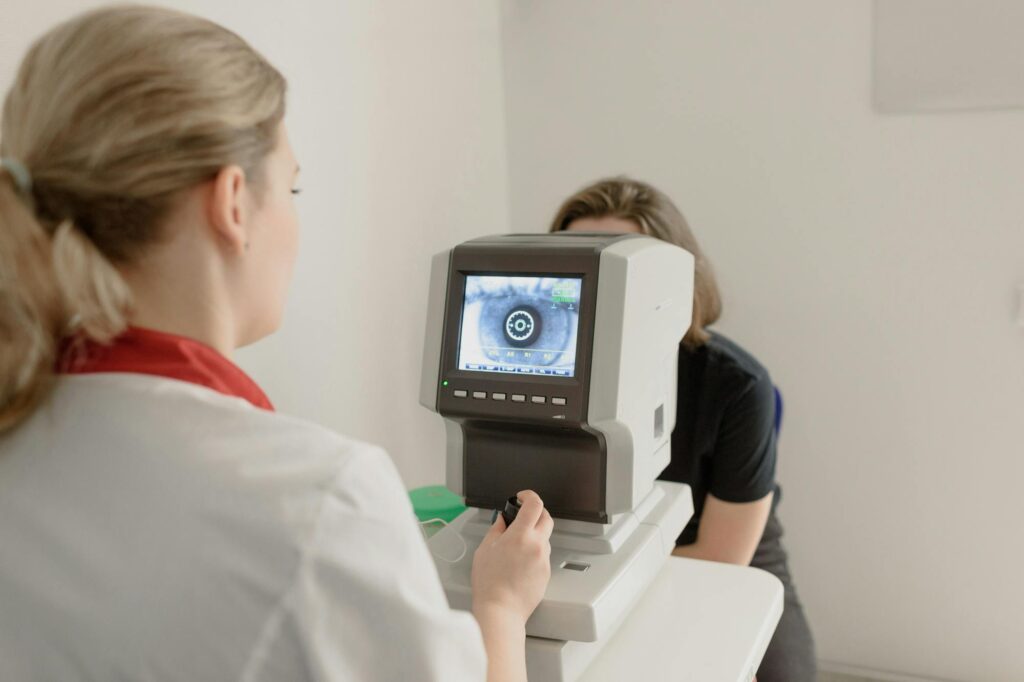
The increasing use of computers, smartphones, and other digital devices influences eye health, contributing notably to dry eye symptoms. Visionary Eye Center’s Digital Lifestyle Exam is designed to assess how extended screen time impacts your eye health and vision. This exam helps identify subtle signs of digital eye strain that might otherwise go unnoticed. Patients working in screen-heavy environments benefit from this specialized approach, as it directly evaluates factors causing their discomfort. Understanding the unique impact of digital usage enables the development of more effective management strategies.
In many cases, patients do not realize that their everyday screen use contributes significantly to eye dryness and irritation. The Digital Lifestyle Exam looks for signs of oil (meibomian) gland dysfunction and poor lid mechanics associated with reduced blink rates from screen use. These factors cause the tear film to evaporate faster, leading to dry eye symptoms. Armed with this information, the optometrist can recommend specific behavioral and therapeutic interventions tailored to each patient’s needs. This exam serves as an essential step for those seeking relief in Reno’s dry, technology-oriented environment.
By addressing screen-related challenges, this exam empowers patients to protect their eye health proactively. The personalized insights gained allow for targeted treatments that improve comfort and maintain visual performance. Scheduling a Digital Lifestyle Exam offers a clear path toward identifying the role of digital habits in dry eye issues. It is a foundational tool for those experiencing eye fatigue, irritation, or dryness linked to modern work and lifestyle demands.
For a dedicated and in-depth evaluation of all things related to dryness and discomfort, Visionary Eye Center offers its exclusive BIONIQS Ocular Surface Evaluation. BIONIQS stands for the 7 core areas of ocular surface disease: Bacteria, Inflammation, Obstruction, Nerve dysfunction, Immunology (allergies and autoimmune), Quality/Quantity of tear, and Structure (i.e., lid mechanics). This specialized exam ensures a thorough understanding of the condition to guide effective treatment.
Dry eye syndrome causes vary widely among patients, requiring a detailed and specific approach to diagnosis. The Visionary Eye Center utilizes its comprehensive BIONIQS evaluation to determine the exact cause of symptoms, whether related to tear quality, inflammation, meibomian gland dysfunction or nerve damage. This thorough assessment goes beyond surface-level treatment, ensuring care plans are scientifically grounded. Accurate diagnosis is critical for devising effective therapies that address the root of the problem rather than just the symptoms.
The evaluation process involves advanced diagnostic tools, like the Oculus Keratograph 5M, that measure tear production, assess gland functionality, nerve and eyelid function and detect ocular surface inflammation. Recognizing the diversity of dry eye conditions prevents misdiagnosis and avoids ineffective treatments. Patients benefit from a clear understanding of their condition, which sets expectations and informs treatment choices. This approach underscores the commitment to personalized medicine in eye care.
By tailoring diagnosis to individual patient profiles, the center enhances the precision of dry eye management. This step is essential in providing relief that is both enduring and meaningful for patients’ everyday lives. A proper diagnosis also helps guide follow-up care and adjustments in treatment as needed. Individuals seeking expert evaluation for chronic or persistent dry eye in Reno find this thorough approach especially valuable.
Dry eye treatment varies based on individual diagnosis, symptoms, and severity. The Visionary Eye Center offers customized treatment plans that may include dropless options like intense pulsed light (IPL), radiofrequency, punctal plugs, Zest or Rinsada biofilm treatments, TearCare or low level red light therapy. Pharmaceutical approaches include prescription eye drops, nasal tear stimulants and tear stabilizers. For more advanced cases, therapies such as regenerative autologous or PRP eye drops and scleral cover shells are incorporated to enhance healing and symptom relief. Patients benefit from a well-rounded approach that combines multiple modalities under expert guidance.
The Visionary Eye Center offers cutting-edge treatments such as IPL (Intense Pulsed Light), radiofrequency, and low-level light therapy. As IPL is the center’s workhorse dry eye treatment, as it is especially effective at addressing inflammation and meibomian gland dysfunction, the key drivers of evaporative dry eye. Highlighting this technology underscores Visionary Eye Center’s commitment to offering the most effective and technology forward solutions. Additionally, biofilm treatment options like Rinsada and Zest further expand the range of personalized care available to patients to address the symptoms of burning, itchy eyes from blepharitis (microbial overgrowth on the lids and lashes).
Prescription options like Vevye, Meibo, Xiidra, Cequa and Restasis can improve tear quality and reduce inflammation, addressing specific deficiencies detected during evaluation. Punctal plugs help conserve natural tears by blocking drainage ducts, increasing moisture retention on the eye’s surface. Radiofrequency heat therapy and lid hygiene treatments target meibomian gland dysfunction, restoring gland function and supporting healthier tear film stability.
The latest technological advancements enable the optometric team to monitor progress closely and adjust therapies for optimal outcomes. Patients appreciate individualized care that evolves with their condition, ensuring long-term management success. Investing in advanced treatments reflects the center’s dedication to offering Reno residents meaningful solutions for dry eye. Collaborative care between patient and provider fosters improved comfort and vision quality.
Managing dry eye often requires sustained effort and ongoing support due to its chronic nature. The Visionary Eye Center emphasizes continuous care through regular follow-ups and patient education. Empowering patients with knowledge about environmental triggers, lifestyle modifications, and proper at-home care is fundamental to maintaining symptom control. This support helps patients integrate effective habits that complement clinical treatments.
Education covers topics such as optimizing workplace ergonomics, managing screen time, and using humidifiers to combat dryness. Patients learn the importance of adherence to prescribed treatments and how to recognize symptom changes. This proactive approach minimizes flare-ups and preserves eye health over time. Ongoing communication ensures that treatments remain aligned with patient needs.
The center’s commitment to long-term patient well-being extends beyond the exam room. By fostering a partnership with patients, the team helps them navigate challenges associated with dry eye. This well-rounded care model improves quality of life and reinforces patient confidence in managing their condition. Continuous education and support are key components in achieving lasting relief.
Visionary Eye Center invites individuals experiencing dry, irritated, or fatigued eyes to schedule a Digital Lifestyle Exam or specialized BIONIQS ocular surface evaluation. Through detailed diagnosis and personalized treatment plans, patients obtain targeted solutions designed for their specific condition. The center’s combination of advanced technology, expert knowledge, and ongoing patient support makes it a trusted choice for dry eye care in Reno. Taking this step can lead to improved eye comfort and better daily vision, helping patients regain control over their eye health.
As parents, we all wish to see our children thrive and excel in every aspect of their lives, and ensuring they have optimal vision is a crucial part of their overall development and well-being. At Visionary Eye Center in Reno, we understand the importance of early detection in preventing and treating pediatric vision problems. This guide is designed to help parents spot the early warning signs of vision issues in children, emphasizing the critical role of pediatric eye exams.
One of the first indicators that a child may be experiencing vision problems is a noticeable increase in squinting, blinking, or eye rubbing. These actions can be a child's instinctive response to try to clear their vision or relieve discomfort caused by eye strain. Frequent squinting might suggest your child is struggling to see clearly at a distance, indicative of myopia (nearsightedness), while difficulty focusing on close objects might point towards hyperopia (farsightedness) or astigmatism. Recognizing these behaviors as potential signs of vision issues is the first step towards seeking a pediatric eye exam.
Eye rubbing, especially if it's persistent, could also indicate eye fatigue or irritation. While it's normal for anyone to rub their eyes occasionally, constant rubbing might suggest an underlying issue that warrants a professional evaluation.

Children who experience discomfort when performing tasks that require near vision, such as reading or playing with small toys, may start to avoid these activities. This avoidance can be a subtle sign of vision problems. Parents might notice their child feeling frustrated or showing a lack of interest in learning activities they previously enjoyed. If your child is avoiding homework, reading, or engaging in detailed play, it could be a sign that these tasks are visually challenging for them due to uncorrected vision issues.
Another common sign that can indicate a vision problem is when a child consistently holds reading materials or digital devices too close to their face or sits nearer to the television than is typical. This behavior may suggest that your child is trying to compensate for blurred distance vision, a hallmark symptom of myopia. While many children like to sit close to the TV for fun, if your child seems to need to sit close to see clearly, it's time to schedule an eye exam.
Listen closely if your child frequently complains of headaches or eye pain, particularly after reading, doing homework, or spending time on a computer or tablet. These complaints can often be attributed to eye strain resulting from uncorrected vision problems. A comprehensive pediatric eye exam can help determine whether vision issues are the cause of your child's discomfort, providing a path to relief through proper vision correction.
If you've noticed any of these signs in your child, it's important to take action by scheduling a pediatric eye exam. Early detection and treatment are key to ensuring your child's vision development is on track. Visionary Eye Center in Reno is here to support your family with comprehensive pediatric eye care services. We encourage parents to observe their child's visual behavior and seek professional advice when concerns arise.
Regular pediatric eye exams are a vital part of children's health care routine, helping to catch and correct vision issues early. Contact us today to schedule an exam and take the first step towards safeguarding your child's vision.
As parents, our children’s health is always a priority, especially when it comes to their vision. Identifying signs that may indicate the need for a pediatric eye exam Reno can make all the difference in ensuring your child’s eye health and supporting their overall development. Visionary Eye Center in Reno is committed to helping parents recognize these signs and understand the importance of regular eye exams for children.
Many children face challenges when it comes to reading or focusing on objects up close, but they might not always express it. You may notice your child squinting, holding books too close, or becoming frustrated with tasks that require near vision. These could be early signs of common vision problems such as myopia (nearsightedness) or hyperopia (farsightedness). Scheduling an eye exam in Reno early on can help detect any issues and provide timely interventions, which are important for your child’s academic success and well-being.
Additionally, if your child avoids activities that require detailed vision, like drawing or solving puzzles, this might indicate that they’re having trouble seeing clearly up close. Such behaviors highlight the need for an eye exam to ensure their vision is developing properly.
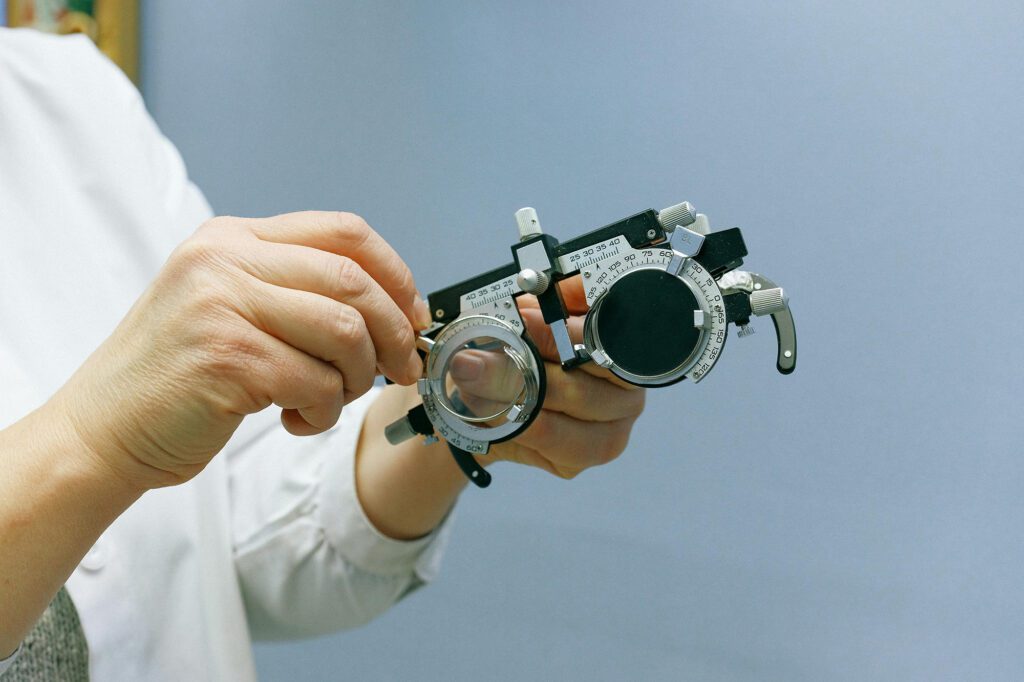
If your child frequently rubs their eyes or complains of discomfort in bright lights, these could be signs of eye strain or other vision problems. These symptoms often go unnoticed by parents, but they’re important indicators that an eye exam Reno may be needed. Regular pediatric eye exams can help detect any underlying conditions early, preventing long-term vision issues and supporting your child’s overall eye health.
If your child avoids tasks that require precise vision, such as reading small text or distinguishing between similar shapes, this could be a sign of an undiagnosed vision issue. These challenges may not just be a lack of interest but rather an indication that your child needs a thorough eye exam. Watching how your child performs in activities that demand visual accuracy can provide important clues about their eye health.
Frequent headaches or eye pain, especially after reading or engaging in visually intense activities, should not be overlooked. These symptoms often signal eye strain or other vision problems that require attention. Scheduling a pediatric eye exam in Reno can address these complaints early, preventing further discomfort and possible worsening of underlying conditions.
At Visionary Eye Center in Reno, we emphasize the importance of paying attention to your child’s vision. Regular eye exams for kids, even if they don’t show symptoms, play a key role in supporting their eye health and development. If you notice any of the signs listed above, don’t hesitate to schedule a pediatric eye exam near you. Our team is here to provide expert care and guidance for your child’s vision needs.
Early detection and treatment are essential for ensuring that your child’s vision supports their learning, growth, and happiness. Contact Visionary Eye Center for your eye exam in Reno and professional pediatric eye care tailored to your child’s unique needs.
Regular eye exams are a cornerstone of maintaining not just good vision but also overall health. At Visionary Eye Center in Reno, we understand that eye health is a critical aspect of your overall wellness. This article aims to shed light on why regular eye exams are essential for people of all ages and how they can help you make informed decisions about your eye care.
It's often said that prevention is better than cure, and this is particularly true for eye health. Many eye conditions, such as glaucoma and macular degeneration, develop silently, showing no noticeable symptoms in their initial stages. Regular eye exams are crucial in catching these conditions early. At Visionary Eye Center, our thorough eye exams are designed to identify such issues before they progress and cause irreversible damage. Early detection means early treatment, significantly improving the chances of preserving your vision and health.
Understanding the silent nature of many eye diseases underscores the importance of regular check-ups. Conditions like glaucoma, often referred to as the “silent thief of sight,” can progress unnoticed. By the time symptoms become apparent, significant vision loss may have already occurred. Routine eye exams can detect these conditions when they are most treatable.
Our eyesight changes as we age, making regular eye exams essential. These exams ensure that any changes in your vision are identified promptly. Whether you need a new prescription for your glasses or adjustments to your current eyewear, regular eye checks help keep your vision sharp and clear. At Visionary Eye Center, we can guide you through these changes, ensuring your vision needs are met at every stage of life.
As you age, you might notice changes in your vision. Maybe you're struggling to read fine print, or distant objects aren't as clear as they used to be. Regular eye exams allow us to track these changes and adjust your prescription, ensuring optimal vision and comfort.
Did you know that an eye exam can reveal much more than just eye-related issues? Your eyes are windows to your overall health, providing clues about systemic diseases like diabetes or hypertension. The blood vessels and nerves in your eyes can show signs of these conditions, often before other symptoms appear. Regular eye exams at Visionary Eye Center can therefore play a critical role in your overall health management.
The comprehensive eye exams at Visionary Eye Center can detect signs of diabetes, high blood pressure, and even cholesterol issues. This makes eye exams an integral part of your healthcare routine, offering insights that go beyond vision care.
For children, vision is closely linked to learning and social development. Regular eye exams are vital in ensuring that children have the visual tools they need to succeed in school and life. Vision problems can significantly impact a child’s academic performance, so catching and correcting these issues early is crucial.
Eye exams for children at Visionary Eye Center are about more than just checking for glasses. They're about ensuring that each child has a solid foundation for development and learning. Regular exams can help identify issues that might impede a child’s ability to read, learn, and engage in activities, setting them up for success from a young age.
We encourage you to prioritize your eye health by scheduling regular eye exams at Visionary Eye Center. These exams are a critical step in maintaining not only your vision but also your overall health. If it's time for an updated prescription or you're interested in exploring new eyewear options, our team is here to assist you. Remember, taking care of your eyes is taking care of your future.
Your eyes are windows to the world, but they can also be sources of discomfort and concern. In Reno, where the climate and lifestyle can impact eye health, understanding how to manage common eye problems is crucial. Visionary Eye Center, a leading group of Reno eye doctors, offers practical advice for dealing with issues like dry eyes, red eyes, and eye infections.
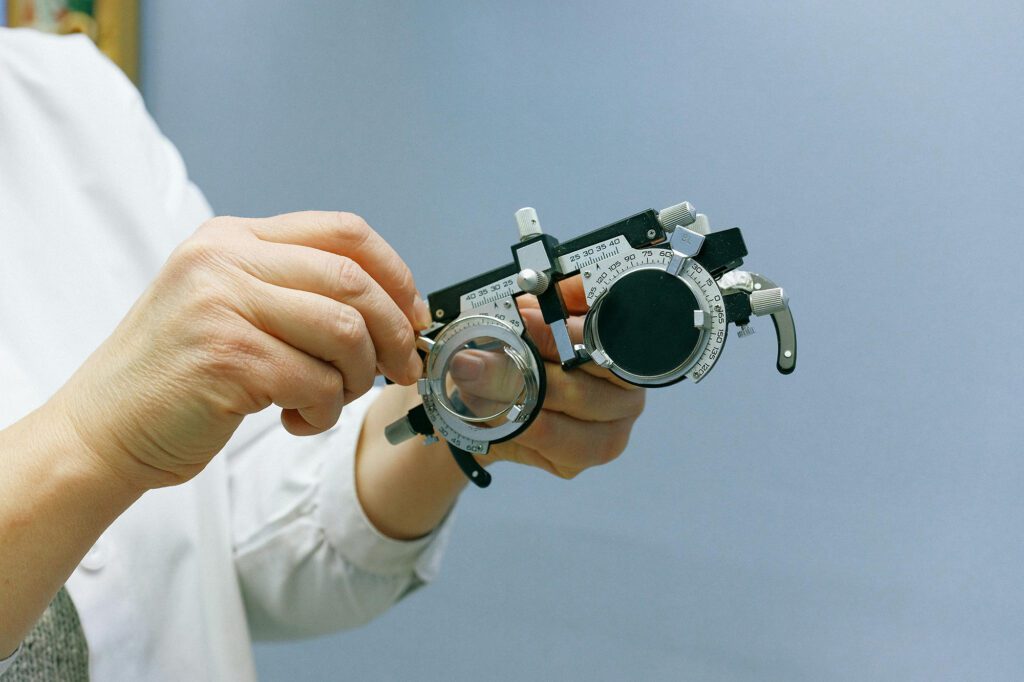
Dry eyes can result from environmental factors like Reno's dry air, certain medications, age-related changes, and prolonged contact lens use. Recognizable by a gritty feeling, burning sensation, and temporary blurred vision, dry eyes are more than just an annoyance.
Combatting dry eyes involves a combination of using lubricating eye drops and avoiding conditions that exacerbate the issue. Regular breaks from screen time, staying hydrated, and using a humidifier can also help.

Red eyes can stem from allergies, eye strain, or more serious conditions like infections. Keeping your hands clean, avoiding eye-straining activities, and using appropriate eye protection are key preventative steps.
For temporary relief, cool compresses and proper eyelid hygiene can be effective. However, persistent red eyes may indicate an underlying issue that requires professional attention.
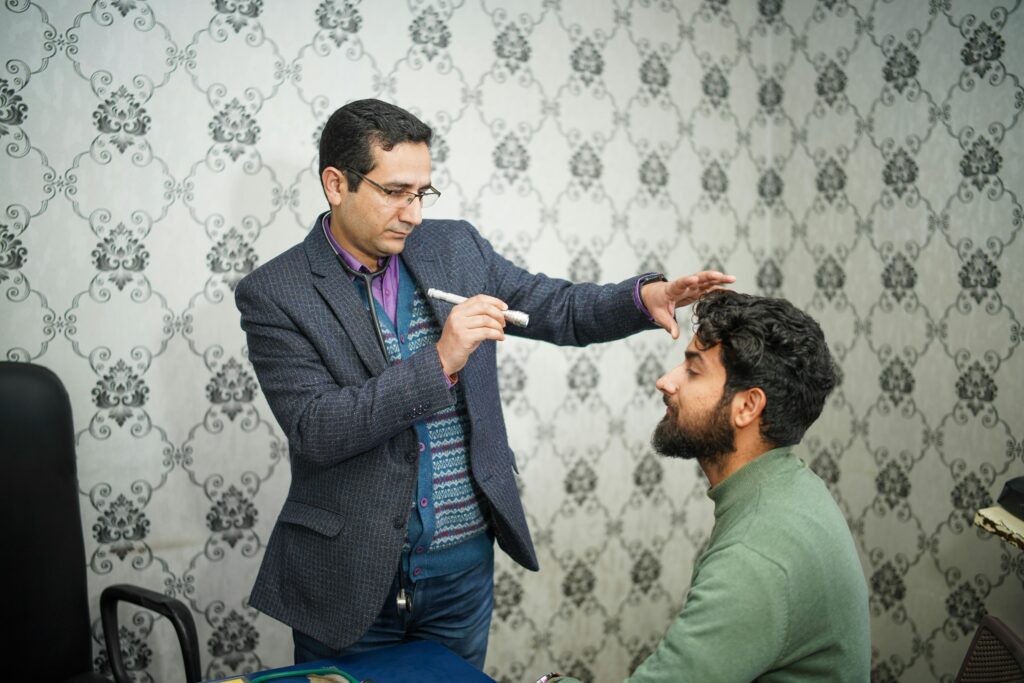
Eye infections, caused by bacteria, viruses, or fungi, often present symptoms like redness, pain, discharge, and light sensitivity. Treatments vary but typically include medicated eye drops or ointments. For contact lens wearers, maintaining good hygiene is crucial for prevention.
Persistent, worsening, or severe symptoms warrant a visit to an eye care professional. Delaying proper care can lead to complications and should be avoided.
Persistent or severe eye problems should prompt a visit to an eye care professional. Self-diagnosis and treatment can delay effective care and potentially lead to complications. Visionary Eye Center in Reno offers expert care for various eye conditions and can provide tailored solutions for your eye health needs.
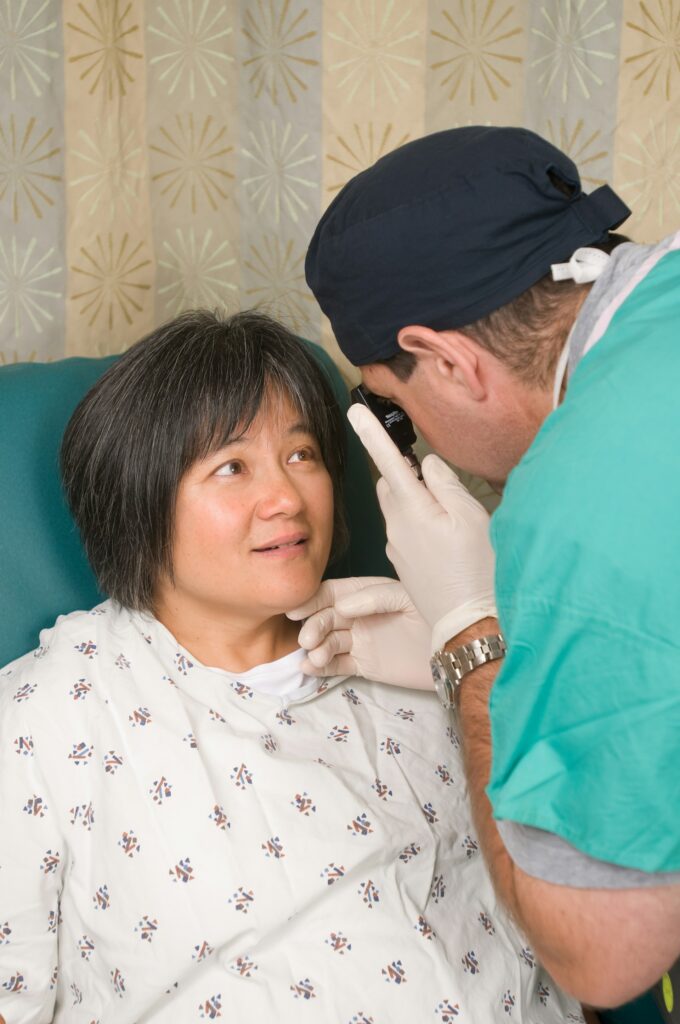
When it comes to vision correction in Reno, LASIK surgery is a widely known option. However, it's not the only path to clearer vision. For those who may not be ideal candidates for LASIK, there are several effective alternatives. Visionary Eye Center in Reno offers insights into choosing the right LASIK alternative based on individual vision needs.
ICL, a suitable option for individuals with thin corneas or chronic dry eye, involves placing a thin lens within the eye. This 20-minute procedure per eye is known for minimal side effects, although recovery can span several months.
ICL is not just a short-term solution. It offers long-lasting vision correction, making it a worthwhile consideration for those ineligible for LASIK.
Photorefractive Keratectomy (PRK) reshapes the cornea by removing its outer layers. It's a preferred choice for those with thin corneas who can't undergo LASIK. While the recovery from PRK can be longer and more uncomfortable, it's highly effective, especially for athletes or pilots.
The post-PRK recovery period may involve more discomfort compared to LASIK, but the outcomes in terms of vision correction are commendable.
Refractive Lens Exchange (RLE) replaces the eye's natural lens with a synthetic one. It's particularly beneficial for those over 40, addressing presbyopia and early cataracts. RLE suits individuals with strong prescriptions not correctable by LASIK.
RLE not only corrects vision but also prevents the future development of cataracts, offering a dual benefit for aging eyes.
LASEK surgery, similar to LASIK and PRK, is recommended for people with thin or flat corneas. The recovery period can be prolonged, with potential side effects like dry eyes and light sensitivity. Choosing between LASIK, PRK, and LASEK depends on individual eye structure, lifestyle, and vision goals.
After exploring these alternatives, it's crucial to consult with eye care professionals to determine the most suitable option. At Visionary Eye Center, we assess your specific vision correction needs to recommend the best procedure.
We invite you to visit Visionary Eye Center in Reno to explore these LASIK alternatives. Our team is dedicated to providing personalized care, ensuring you receive the best treatment for your unique vision needs.
It’s pretty painful to get a sunburn after missing a spot on your skin with sunscreen. Just imagine how a corneal sunburn would affect your quality of life during some of the best weather of the year. Also known as photokeratitis, this issue occurs during short-term exposure to high intensity UV-B rays. Photokeratitis is painful but temporary and is similar to a sunburn, but on your corneas (the clear portion of your eye in front of your pupil) instead of skin. It can look like a yellow, thickened area in the whites of your eyes. Too much exposure with ultraviolet rays can temporarily damage your conjunctiva, which is the clear layer of tissue covering the inside of your eyelid and whites of your eye.
Summertime activities that can put someone at increased risk for photokeratitis include mountain climbing, hiking, skiing, and swimming. It can also occur if you use sunlamps and tanning beds, or spend time in an environment with consistent UV light exposure.
There are two types of UV light proven to contribute to eye, skin, or health issues. UV-A rays can pass through your eye’s cornea to reach the lens and retina. UV-B rays can’t pass through glass but still can cause eye damage.

The symptoms of photokeratitis are pain and redness in the eyes, swelling, light sensitivity, headaches, temporary loss of vision, twitching eyelids, and seeing halos (like in the photo below). They can last from six to twenty-four hours but typically disappear after forty-eight hours.
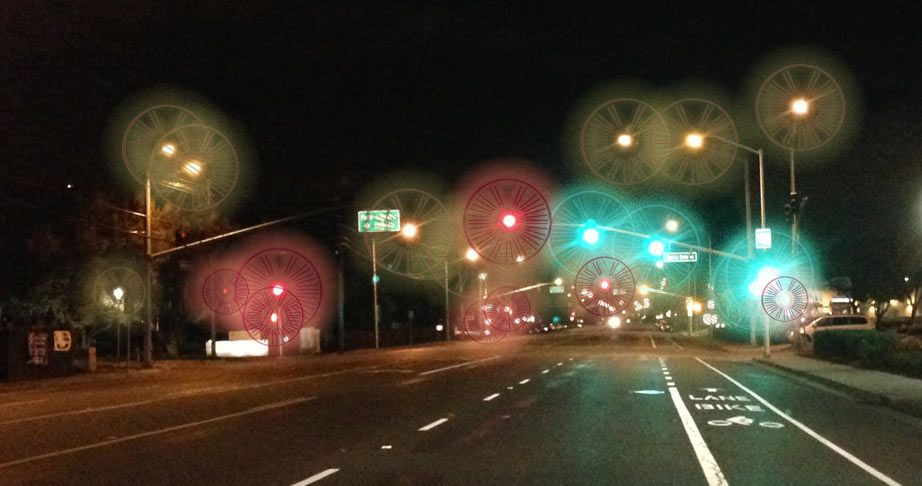
Photokeratitis is most often formally diagnosed after an eye exam, and your doctor will place drops containing a special dye known as fluorescein in your eyes to reveal any superficial irregularities on the surface of your cornea. As for treatment, go indoors immediately after experiencing symptoms and avoid bright lights. Once in a darkened area, place a cold washcloth over your eyes and take ibuprofen. If you wear contact lenses, remove them and use artificial tears to reduce discomfort.
The longer you were exposed to UV lights, the more severe the symptoms. Long term exposure to even the tiniest amount of UV radiation can increase the risk of developing a cataract or macular degeneration (an eye disease that leads to vision loss in the center), or cause tissue elevations on the surface. These conditions are known as pinguecula and pterygium, but can be prevented by wearing sunglasses.
If you wear contacts, ask about ones that absorb UV rays when working or playing in a sunny environment. But even with these types of contacts it’s still important to wear protective sunglasses to shield your eyelids and conjunctiva from the suns’ rays.

The good news is that photokeratitis is preventable simply by wearing the proper eye protection when outside, like prescription sunglasses or snow goggles in the winter. Glare from snow, sand, or water can cause burns to your eyes even if it’s overcast. A wide brimmed hat can help filter out the sun’s rays as well.
When purchasing a pair of sunglasses, it’s worth noting that not all sunglasses are polarized. Polarized sunglasses are manufactured in a distinctive way that creates a different pattern in the lens to block out more light than a usual pair of sunglasses. When choosing a pair, look for one that provides one hundred percent UV protection or UV 400 protection. Prescription sunglasses help with overall light sensitivity, headaches caused by glare, and regular eye strain from squinting in bright sunlight.
For more information, check out our other blog post on prescription sunglasses here.
Be sure to visit your eye specialist once a year to stay up on your eye health and catch any issues early. It’s never been a better time to make an appointment with the team at Visionary Eye Center to get the perfect pair of prescription sunglasses for your summer adventures.
Our Reno eye care facility is one of the best in preventing photokeratitis in our patients.
Schedule an Exam with an Eye Doctor in Reno
Here at Visionary Eye Center, we treat plenty of patients with blepharitis, so you aren’t alone. An estimated 82 million Americans have been diagnosed with the eyelid disease. As eye doctors in Reno with decades of experience, we strive to make sure that our patients understand the cause of blepharitis: simply just an abundance of bacteria near the eyelids.
Because the disease contributes to dry eye syndrome, it leads to other symptoms like itching, a gritty feeling in the eyes, eyelid crusting that looks like dandruff, and red, swollen eyes. In addition to serious discomfort, blepharitis can negatively affect those scheduled or in the process for cataract or LASIK refractive surgeries. If left untreated, blepharitis can cause patients to experience chronic red-eyes, styes, or damage to their corneas.
There are two different types of blepharitis: posterior and anterior. Posterior blepharitis is usually caused by inflammatory conditions like rosacea. Anterior blepharitis is typically caused by microbes like Staphylococcus bacteria (which causes staph infections) and Demodex mites.
Demodex are mites that live on skin and thrive in hair and lash follicles. Younger children or the elderly are more likely to have an abundance of mites. Demodex mites’ average lifespan is estimated to be several weeks, but that is enough time to cause serious cases of blepharitis. They cause irritation with burrowing and laying eggs, and producing small amounts of waste products which feeds further bacterial growth.

Treatment for blepharitis is possible. One common option for Reno optometrists to utilize is ZEST, or Zocular Eyelid System Treatments. It works by gently exfoliating the eyelids to restore the natural state and cleans the eyelid margins to open up the meibomian gland. ZEST ensures the glands can release oils into the eye to create a healthy tear film and reduce symptoms of dry eye, all while providing thorough treatment for blepharitis and other potential diseases. This natural procedure is completed in about ten minutes and helps solve crusting around the eye.
Blepharitis can damage the meibomian glands along the edge of the eyelid where the eyelashes are. These glands create oil needed for tears. The oily layer is the outside of the tear that prevents them from drying too quickly. A number of eye issues can involve these glands, and for more information on additional treatments and procedures, head to our informational page on dry eye syndrome.
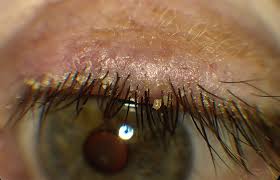
It is not too late to seek out treatment for Demodex mites on your lids or blepharitis. With a variety of eye care methods, including the use of ZEST, the team here at Visionary Eye Center can relieve your eye concerns. Book an appointment today with the best Reno optometrists in the city.
Keratoconus may not be a familiar word for many people, but the disease affects a large number of eye care patients. Keratoconus (KCN) is a progressive eye disease that causes complications with the cornea. It results in vision problems that range from mild to severe and will likely require some form of corrective methods to improve the person’s ability to see.
Through years of research, professionals have been able to determine generally how many people have keratoconus, and the results are surprising. Since a 2017 study performed by Dr. Daniel Godefrooij, it was found that KCN affects roughly 5-10 times more patients than the original findings suggested. Let’s take a deeper dive into what keratoconus is below.
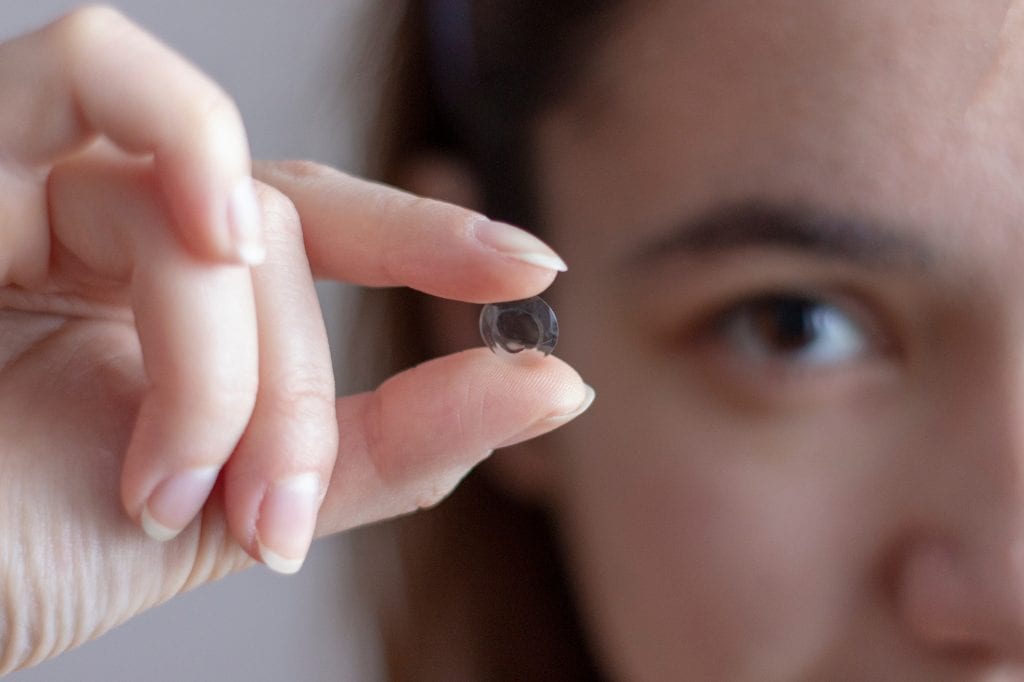
As stated above, keratoconus is a progressive eye disease that can impair a person’s vision and significantly affect the cornea. For patients with keratoconus, the cornea in one or both eyes becomes thin and scars in the center. Specifically, keratoconus involves the central portion of the cornea, which affects a large portion of the eye. The result is a noticeably protruding cornea that has an irregular conical shape followed by poor eyesight.
It’s typical for keratoconus to become present during puberty, or a person’s teen years, and worsens or progresses over time. By the 5th or 6th decade of life the disease will stabilize, but typically a patient with keratoconus will experience irregular astigmatism or scarring that might not be treatable by corrective lenses alone. In the worst cases, a patient may require a corrective procedure known as a corneal transplant.
Originally, research done in part by NKCF (National Keratoconus Foundation) suggested that 1 in 2,000 people were diagnosed with KCN. Years later in 2017, these numbers were questioned by Dr. Daniel Godefrooij who determined that these rates are significantly higher than what was traditionally found. When determining how many people have keratoconus, LASIK (laser in situ keratomileuses) eye surgery played a critical role.
LASIK is a popular method of vision correction that uses lasers to correct the refraction of eye lenses for patients suffering from myopia, hyperopia, and astigmatism. With the increased popularity of LASIK therapy came the realization that keratoconus affects more people than had been previously reported.
Today, Dr. Daniel Godefrooij reports the ratio of people suffering from KCN being 1 in 375. That’s more than 5 times as many people as researchers had originally found.
The cause of KCN is still mostly undetermined, but the development and progression of the disease have been heavily studied over time. Some research has suggested that chronic rubbing of the eyes may contribute to and possibly expedite the overall progression of the eye disease. The most common symptoms of keratoconus to be aware of include:
The plan of treatment for keratoconus will depend on the severity of the patient’s condition. Of utmost importance is early detection, as a recently FDA approved treatment called corneal cross-linking is now available to stabilize the condition. Mild KCN may be treated with the use of corrective lenses, such as eyeglasses or contact lenses. Moderate cases will likely require specialty contact lenses like gas permeable (GP), hybrids or scleral lenses to provide acceptable vision. However, severe forms of KCN may require more aggressive treatment methods such as a corneal transplant or Intacs Corneal Implants.
Keratoconus treatment focuses primarily on slowing the progression of the disease and improving vision. Essentially, there are three types of treatment to help with KCN symptoms which consist of corrective lenses, therapy, or surgery.
If you’ve been experiencing vision problems, it’s important to meet with your Reno optometrist to properly diagnose the issue at hand. You may be suffering from keratoconus and not even realize it. A licensed, trained optometrist can evaluate your vision problems, assess your eye health, and provide an effective method of treatment.
It may be necessary to consider eye surgery and specialty contact lenses to correct your vision problems caused by keratoconus. Dr. Bolenbaker at the Visionary Eye Center can help to develop a unique treatment plan that’s designed to suit your eye care needs.
If you are a driver who also wears glasses, you’ve probably struggled to decide between which pair of glasses to put on in the car. Either way, you’re hindering your vision one way or the other. By not wearing your eyeglasses, you likely won’t be able to see near or far away depending on your eye condition. But not wearing sunglasses could mean being blinded by the harsh UV rays of the sun. The best option is to get yourself a pair of prescription sunglasses, that way you can achieve optimal vision.
When it comes to prescription sunglasses, there are many varying types to choose from. One of our favorites is the polarized sunglass lens that provides added protection to your eyes in harsh sunlight. Learn more about prescription sunglasses and polarized lenses below.
 The Importance of Protecting Your Eyes with Prescription Sunglasses
The Importance of Protecting Your Eyes with Prescription SunglassesMany patients are unaware of just how damaging UV rays can be on their eyes and do very little to protect them from mild or harsh sunlight. Even if there is cloud coverage in the sky, UV rays can still negatively affect your eyes. UV-A rays typically lead to problems with central vision and the macula which is part of the retina. UV-B rays are also damaging, mostly affecting the cornea and lens. Extended exposure to these harmful rays can lead to more serious eye conditions including:
Though many people are hesitant to spend the money on purchasing a second pair of glasses by buying prescription sunglasses, those who have are sure glad they did. Prescription sunglasses provide much-needed sight assistance even in high-light situations. When you’re driving down the street or taking your dog for a walk and the sun is glaring in your eyes, your regular prescription glasses will do very little to help you see. Likewise, wearing sunglasses with no prescription leaves you with very little vision. Prescription sunglasses, however, block out the sun while providing the same sight assistance as your glasses.
Prescription sunglasses can also help with light sensitivity, glare-related headaches, and regular eye strain from squinting in the sun. And if you’re worried about crow's feet, not squinting all the time from either harsh sunlight or blurry vision can help reduce those lines around your eyes.
First, it is important to note that not all sunglasses are polarized. While all sunglasses are designed to limit UV rays from penetrating through the lenses and limit glare, some are much more effective than others.
To understand how polarized sunglasses work, you need to know how light is reflected. Most sunlight that reaches our eyes is dispersed and scattered due to the fact that it often reflects off of uneven surfaces such as trees and roads. However, when sunlight is reflected from a smooth, shiny surface like the hood of a car, Lake Tahoe or a phone screen, the light is reflected in just one direction. The dispersed light is much less bothersome and damaging, while light that is directly reflecting into your eyes is more troublesome.
Polarized sunglasses are manufactured in a unique way that creates a different pattern within the lens that is able to block out more light than typical prescription sunglasses. A special film is laminated in between the lens surfaces in a vertical pattern. This helps block light and eliminate polarized glare entirely.

There are many advantages to wearing prescription sunglasses, especially with polarized lenses. Polarized lenses provide clearer vision in bright light, increases contrast, offer minimal color distortion, and reduces glare, reflection, and eye strain. And, the polarization is built directly into the lens, leaving a seamless finish for flawless vision. For anyone who spends time outdoors, polarized lenses will provide the best UV protection for your eyes.
When it comes to eye protection, eyeglasses and sunglasses are essential. With prescription sunglasses, you never have to worry about choosing which pair of glasses to put on again.
Visionary Eye Center is your home for custom vision solutions, and we take pride in offering top-tier care for each patient. We want our patients and community to be well informed to make the best health decisions for you and your family. Please don’t hesitate to contact us with any general inquiries or concerns, or schedule an appointment for an eye exam!
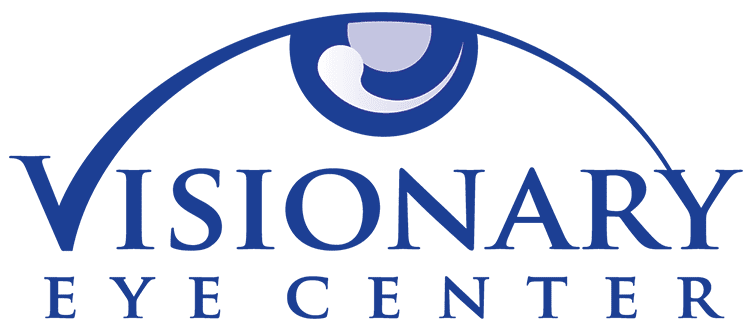 775.827.1100info@visionaryeyecenter.com8175 South Virginia Street Suite B-900
775.827.1100info@visionaryeyecenter.com8175 South Virginia Street Suite B-900